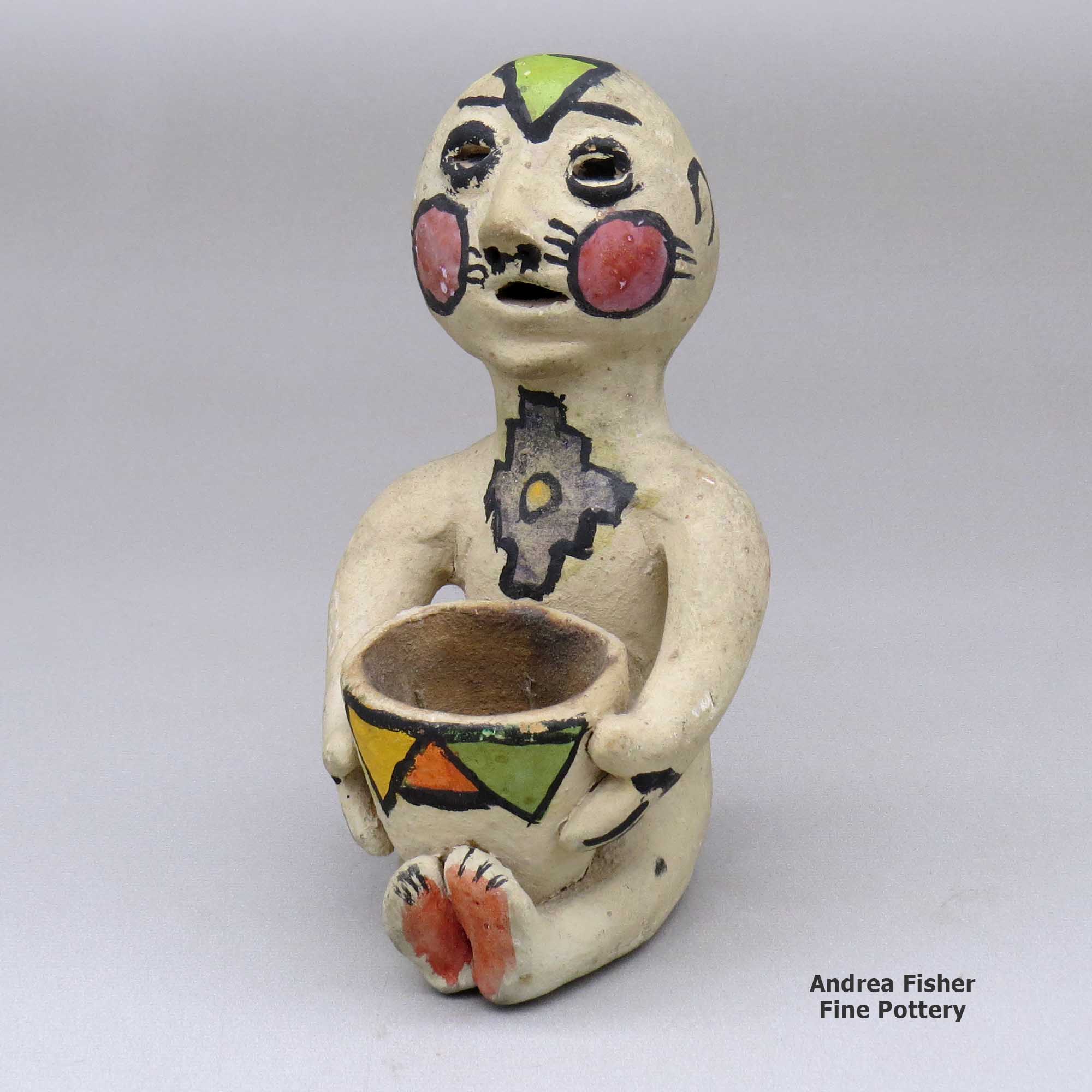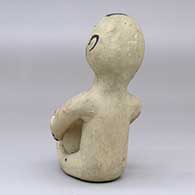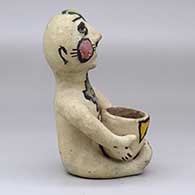
Tesuque Pueblo

A Tesuque Rain God
Tesuque Pueblo is located about 10 miles north of today's city of Santa Fe, New Mexico. Archaeologists have dated a few sites in the Tesuque Valley back to Tanoan times, around 850 CE. By 1200 CE there were many small villages in the Tesuque Valley and Santa Fe Basin areas. Then came the Tewa migrations of the late 1200s and early 1300s and everyone started to gather together in larger villages. When the Spanish arrived in 1540, they found only six villages. The main Tesuque Pueblo (at that time) was located about 3 miles east of where today's pueblo is.
During the Pueblo Revolt of 1680, it was a pair of Tesuque runners who misled the Spanish as to when the tribes planned to revolt. The Spanish governor killed the runners for their efforts, then saw many of his Spanish subjects killed when it turned out the "date" was wrong and the tribes revolted early. At Tesuque, the warriors killed the local priest and another government official immediately, then marched to the Palace of the Governors in Santa Fe to join with the warriors of other pueblos in that confrontation with the Spanish. A few days later, the Spanish were allowed to leave the Palace of the Governors peacefully and begin the long march south on the Camino Real, back to Mexico.
When Don Diego de Vargas returned at the head of Spanish troops (the Conquistadors) in 1692 and began to reconquer northern Nuevo Mexico, one of the first things his troops did was burn and tear down the main Tesuque village. Shortly after that the tribe officially submitted to Spanish rule, moved to the present pueblo site and began rebuilding in 1694.
Between changes of government, European-introduced diseases, European encroachment on pueblo land and general disregard for the people of the pueblos, the next 250 years were not kind to the Tesuque people. By 1910, the pueblo's population was down to 77.
Today there are about 800 members of the Tesuque tribe living on a reservation of more than 17,000 acres. The tribe operates the Tesuque Casino and Hotel, and the Camel Rock Suites (on South St. Francis Drive in Santa Fe).
Before the 1800s, Tesuque pottery mostly resembled the pottery produced at San Ildefonso at that time. Around 1830 that began to change as Tesuque potters experimented with newly found clays and slips that shortly made Tesuque Polychrome a style of its own. That style was quite popular until an Anglo trader named Jake Gold appeared. Tesuque potters had long been making small figures they called Muna. Gold convinced most of them to make as many muna as they could, except he called them "Rain Gods." He also convinced them to paint those figurines with commercial paint. Gold did an outstanding marketing job and soon, Tesuque potters were turning out Rain Gods by the thousands. They were distributed nation wide and many manufacturers bought them by the barrel to give away as promotional items with their products. That push for mass production virtually destroyed pottery making at Tesuque. In the 1920s the demand for Rain Gods diminished and the potters turned to making other low quality goods painted with commercial "Day-Glo" poster paints.
In the 1930s and 1940s only a handful of Tesuque potters were producing but Catherine Vigil persevered through those times making traditional Tesuque polychrome pottery. In the 1960s a few young potters took up where Catherine left off and a small revival of traditional pottery making began at Tesuque. There are still some muna trickling into the marketplace, too. However, the tribe's commercial ventures these days have pretty much replaced most making of pottery.
100 West San Francisco Street, Santa Fe, New Mexico 87501
(505) 986-1234 - www.andreafisherpottery.com - All Rights Reserved

100 West San Francisco Street, Santa Fe, New Mexico 87501
(505) 986-1234 - www.andreafisherpottery.com - All Rights Reserved




